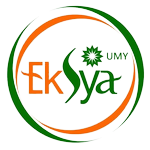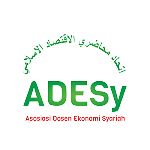Eight Years of Research Related to the Green Sukuk in the Global Stock Exchange Market to Support the Implementation of SDG: A Bibliometric Review
DOI:
https://doi.org/10.18196/jiebr.v3i2.204Keywords:
Green, Sharia, Sukuk, Underlying AssetAbstract
The awareness of investors that only invest in green instruments has been increasing recently. Green sukuk was an investment that followed the Sharia principle and promoted environmental preservation. This study aims to analyze green sukuk in previous studies as an alternative financing for green infrastructure development in Indonesia. This study used a bibliometric method by taking secondary data from meta-data papers from Scopus and SCI. Forty papers from Scopus and 29 from SCI during 2016-2023 were taken as samples. Data were analyzed with Vosviewer and Biblioshiny. The results of this study show that the energy was closely related to the topic of green sukuk. Energy was mostly used in the abstract and titles of papers. Moreover, the abstract and the title showed that the word sustainable was used frequently, implying that the energy power plant could become an underlying asset for green sukuk due to its sustainable revenue. However, the government should take action to create regulations that could support the green project as an underlying asset of Green Sukuk.
References
Aassouli, D., Asutay, M., Mohieldin, M., & Nwokike, T. C. (2018). Green Sukuk, Energy Poverty, and Climate Change: A Roadmap for Sub-Saharan Africa. World Bank Policy Research Working Paper, 8680.
Abubakar, L., & Handayani, T. (2020). Green Sukuk: Sustainable Financing Instruments for Infrastructure Development in Indonesia. 1st Borobudur International Symposium on Humanities, Economics and Social Sciences (BIS-HESS 2019), 983–987.
Ansori, A., Qosim, N., & AR, Z. T. (2022). Financial Literacy dan Niat Berinvestasi Bidang Properti pada Masyarakat Ekonomi Menengah. Proceedings of Annual Conference on Community Engagement, 3, 203–216.
Arafah, W., Nugroho, L., Takaya, R., & Soekapdjo, S. (2018). Marketing strategy for renewable energy development in Indonesia context today. International Journal of Energy Economics and Policy, 8(5), 181–186.
Aristyanto, E., Putra, A. P., & Riduwan, R. (2021). Pengaruh Religiusitas, Pelayanan dan Tarif Premi terhadap Kepuasan Nasabah Asuransi Syariah dengan Minat Berasuransi Syariah Sebagai Variabel Intervening di Perusahaan Asuransi Syariah Cabang Surabaya. Perisai: Islamic Banking and Finance Journal, 5(2), 174–203.
Faisal, Y. A., Gunawan, I., Cupian, Hayati, A., Apriliadi, A., & Fajri, M. (2023). Examining the Purchase Intentions of Indonesian Investors for Green Sukuk. Sustainability, 15(9), 7430.
Fianto, B. A., Gan, C., Hu, B., & Roudaki, J. (2018). Equity financing and debt-based financing: Evidence from Islamic microfinance institutions in Indonesia. Pacific-Basin Finance Journal, 52, 163–172.
Fios, F., & Martoredjo, N. T. (2021). Utilization of wind energy in Belu District to improve community welfare and support environmental friendly development. IOP Conference Series: Earth and Environmental Science, 747(1), 12086.
Guild, J. (2020). The political and institutional constraints on green finance in Indonesia. Journal of Sustainable Finance & Investment, 10(2), 157–170.
Hariyani, H. F., Kusuma, H., & Hidayat, W. (2020). Green Sukuk-Based Project on Sustainable Waste Management in Indonesia. Al-Iqtishad: Jurnal Ilmu Ekonomi Syariah, 12(2).
Jariwala, H. J., Syed, H. S., Pandya, M. J., & Gajera, Y. M. (2017). Noise Pollution & Human Health: A Review. Indoor and Built Environment, 1–4.
Keshminder, J. S., Abdullah, M. S., & Mardi, M. (2022). Green sukuk–Malaysia surviving the bumpy road: performance, challenges and reconciled issuance framework. Qualitative Research in Financial Markets, 14(1), 76–94.
Keshminder, J. S., Gurmit, B. S., Zainora, A. B., & Syafiq, M. A. (2019). Green sukuk: Malaysia taking the lead. Malaysian Journal of Consumer and Family Economics, 22, 1–22.
Khanfar, I. A. A., & Khanfar, N. A. A. (2022). Islamic Sukuk and Its Role in Economic Recovery and Growth Post-Covid. In The Implementation of Smart Technologies for Business Success and Sustainability: During COVID-19 Crises in Developing Countries (pp. 299–310). Springer.
Lai, K. (2018). Deal: world’s first sovereign green sukuk. International Financial Law Review.
Mafruchati, M. (2020). Duck meat, delicious yet low in unsaturated fat; comparative study between duck meat consumption in asean toward the number of covid cases. Systematic Reviews in Pharmacy, 11(10).
Mafruchati, M., Ismail, W. I. W., Wardhana, A. K., & Fauzy, M. Q. (2023). Bibliometric analysis of veterinary medicine on embryo of animals in textbook in conceptualizing disease and health. Heliyon.
Mohamed Shaffril, H. A., Samsuddin, S. F., & Abu Samah, A. (2021). The ABC of systematic literature review: the basic methodological guidance for beginners. Quality & Quantity, 55, 1319–1346.
Morea, D., & Poggi, L. A. (2017). An innovative model for the sustainability of investments in the wind energy sector: The use of green sukuk in an Italian case study. International Journal of Energy Economics and Policy, 7(2).
Musari, K. (2021). Green Sukuk, Islamic Green Financing: A Lesson Learned From Indonesia. In Handbook of Research on Climate Change and the Sustainable Financial Sector (pp. 1–16). IGI Global.
Nizar, M., Dzikrulloh, N. Q., & Ansori, R. (2019). Mosque Based Economic Empowerment Model to Overcome Poverty in Indonesia. CIFET 2019: Proceedings of the 1st Conference on Islamic Finance and Technology, CIFET, 21, 88.
Nugroho, P. A. (2017). Scholarly Communication Melalui Open Journal Systems di Perpustakaan Perguruan Tinggi. LIBRARIA: Jurnal Ilmu Perpustakaan Dan Informasi, 53–61.
Nugroho, P. A. (2021). Produktivitas Akademisi Perguruan Tinggi Pada Masa Pandemi Covid-19 Dan Hubungannya Pada Publikasi Berstandar Internasional. UNILIB: Jurnal Perpustakaan.
Nugroho, P. A. (2022a). Publikasi Terindeks Scopus Oleh Pustakawan Indonesia, Apakah Jumlah Halaman Mempengaruhi Potensi akan Sitasi? THE LIGHT: Journal of Librarianship and Information Science, 2(2).
Nugroho, P. A. (2022b). TREN RISET TENTANG PERPUSTAKAAN DAN KEBERLANGSUNGAN LINGKUNGAN PADA PUBLIKASI TERINDEKS SCOPUS. Buletin Perpustakaan Universitas Islam Indonesia, 5(2), 247–261.
Nugroho, P. A., Anna, N. E. V., & Babbar, P. (2023). Benefits and drawbacks of OpenVPN in accessing Osiris in academic libraries. Library Hi Tech News, ahead-of-print.
Nugroho, P. A., Anna, N. E. V., & Ismail, N. (2022). Twitter as Public Sphere to Connect between Librarians and Library Users: A Bibliometric Analysis of Research Topics Trend Related to Twitter Usage and Library Service. International Journal of Media and Information Literacy, 7(2), 522–530.
Nugroho, P. A., Anna, N. E. V., & Ismail, N. (2023). The shift in research trends related to artificial intelligence in library repositories during the coronavirus pandemic. Library Hi Tech.
Nugroho, P. A., & Narsa, I. M. (2020). Depiction of Connection Between Library And Information Science In Articles Published by Universitas Airlangga’s Academicians. International Journal of Innovation, Creativity and Change, 12(12), 963–976.
Polley, D. E. (2016). Visualizing the topical coverage of an institutional repository with VOSviewer. Data Visualization: A Guide to Visual Storytelling for Libraries, 111.
Prasetyo Adi Nugroho. (2021). Tren Publikasi Tentang Perpustakaan Di Indonesia Selama Pandemi: Studi Bibliometrik. Buletin Perpustakaan UII, 4(2).
Qosim, N. (2016). Menjajaki Potensi Islamisasi Ilmu Ekonomi. EL-BANAT: Jurnal Pemikiran Dan Pendidikan Islam, 6(2), 129–142.
Qosim, N., & Buhori, I. (2022). Peran Pemerintah dalam Bidang Ekonomi menurut Muhammad Baqir ash-Shadr. JIESP: Journal of Islamic Economics Studies and Practices, 1(2), 193–207.
Rahim, S. R. M., & Mohamad, Z. Z. (2018). Green Sukuk for financing renewable energy projects. TUJISE, 5(2), 129.
Rima, S., & Ahmed, H. (2020). THE IMPACT OF GREEN ISLAMIC FINANCE ON THE RENEWABLE ENERGY INVESTMENTS: Indonesia’s experience in green Sovereign Sukuk instrument. La Revue Des Sciences Commerciales, 19(1), 151–170.
Rusydiana, A. S., & Irfany, M. I. (2021). Proposing Blue Sukuk in Indonesia: An Interpretive Structural Model. Shirkah: Journal of Economics and Business, 6(1), 101–114.
Schach, M.-O., Schneider, R., Schramm, H., & Repke, J.-U. (2010). Techno-economic analysis of postcombustion processes for the capture of carbon dioxide from power plant flue gas. Industrial & Engineering Chemistry Research, 49(5), 2363–2370.
Sihaloho, E. D., Wiksadana, W., & Siregar, C. D. T. (2020). Impacts of regional economic factors on the transmission of coronavirus disease 2019 (COVID-19) in Indonesia. Ekonomis: Journal of Economics and Business, 4(2), 397–403.
Singh, S. K. (2023). THE CURRENT RESEARCH TREND OF ISLAMIC EDUCATION IN INDONESIA PESANTREN AND ITS PROPERTIES. Piwulang: Jurnal Pendidikan Agama Islam, 6(1), 69–83.
Siswantoro, D. (2018). Performance of Indonesian green sukuk (islamic bond): a sovereign bond comparison analysis, climate change concerns? IOP Conference Series: Earth and Environmental Science, 200(1), 12056.
Subadyo, A. T., & Poerwoningsih, D. (2017). Design of Integrated Infrastructure Development in Poncokusumo Agropolitan Region-Malang, Indonesia. Ecology, Environment and Conservation, 23(1), 63–70.
Suroso, D. S. A., Setiawan, B., Pradono, S. P., & Fitriyanto, M. S. (2020). Cross-Country Study of Indonesia Green Sukuk and REDD.
Suwanan, A. F., Putro, A. C., Triyanto, A., Munir, S., & Merlinda, S. (2021). Analysis of the impacts and challenges of Covid-19 on green sukuk in Indonesia. In Halal Development: Trends, Opportunities and Challenges (pp. 32–37). Routledge.
Tritto, A., & Camba, A. (2022). The Belt and Road Initiative in Southeast Asia: A Mixed Methods Examination. Journal of Contemporary China, 1–19.
Uddin, M. B., & Hamat, A. A. (2019). Ibn Khaldun’s economic thought: A role model for sukuk market.
Ulum, B. (2023). ISLAMISASI ILMU PENGETAHUAN: KENISCAYAAN EPISTEMOLOGI UNTUK KUALITAS PENDIDIKAN LEBIH BAIK. Ta’dibi: Jurnal Manajemen Pendidikan Islam, 11(2), 1–32.
Van Eck, N., & Waltman, L. (2009). Software survey: VOSviewer, a computer program for bibliometric mapping. Scientometrics, 84(2), 523–538.
Xu, Z., Yu, D., & Wang, X. (2018). A bibliometric overview of International Journal of Machine Learning and Cybernetics between 2010 and 2017. International Journal of Machine Learning and Cybernetics, 10(2), 2375–2387. https://doi.org/https://doi.org/10.1007/s13042-018-0875-9
Zhao, S., Jiang, Y., & Wang, S. (2019). Innovation stages, knowledge spillover, and green economy development: moderating role of absorptive capacity and environmental regulation. Environmental Science and Pollution Research, 26(24), 25312–25325.
Downloads
Published
How to Cite
Issue
Section
License
Copyright (c) 2023 Journal of Islamic Economic and Business Research

This work is licensed under a Creative Commons Attribution-NonCommercial 4.0 International License.
Journal of Islamic Economic and Business Research has CC-BY NC or an equivalent license as the optimal license for the publication, distribution, use, and reuse of scholarly work for non-commercial purpose. The non-commercial use of the article will be governed by the Creative Commons Attribution license as currently displayed on Creative Commons Attribution-NonCommercial 4.0 International License
Creative Commons License




